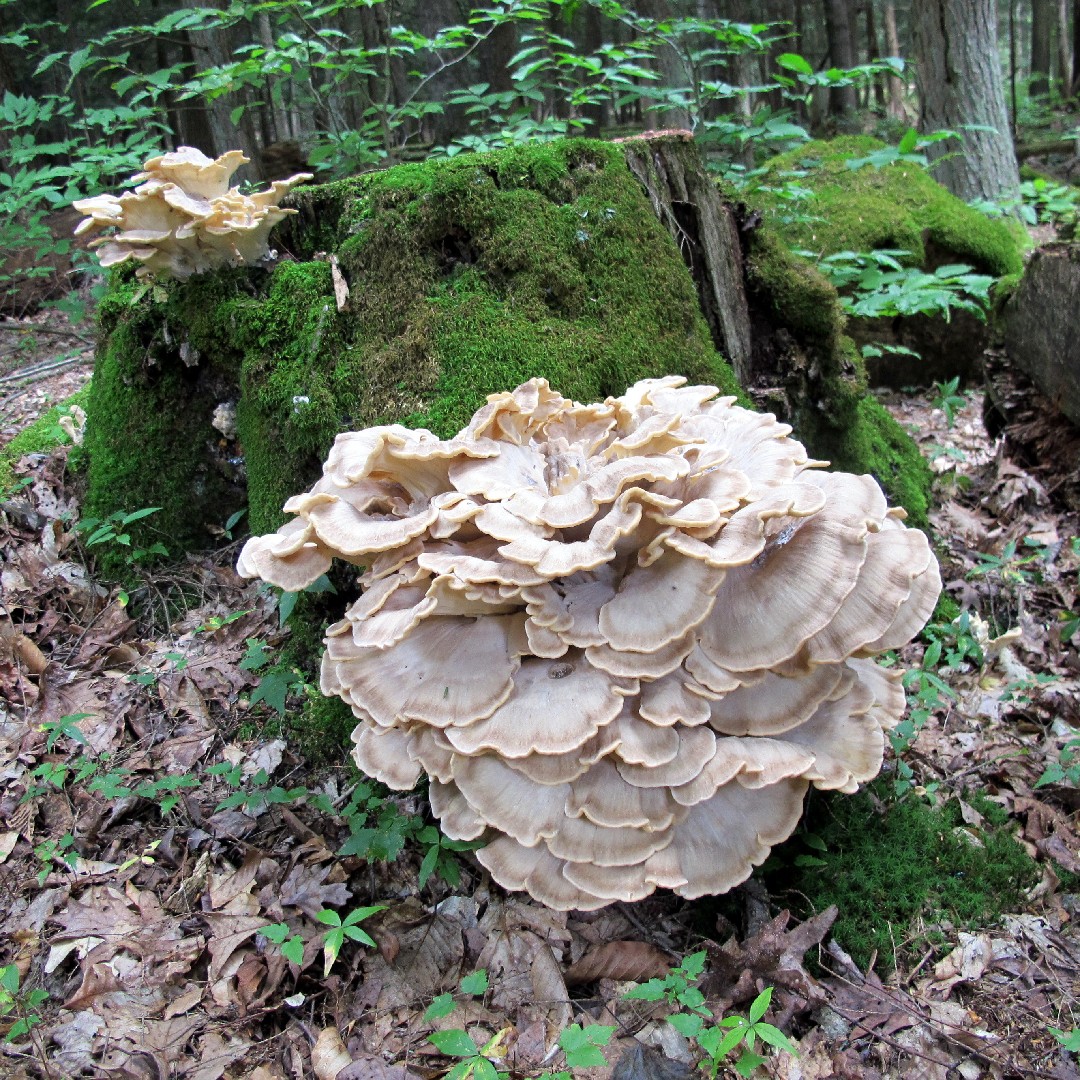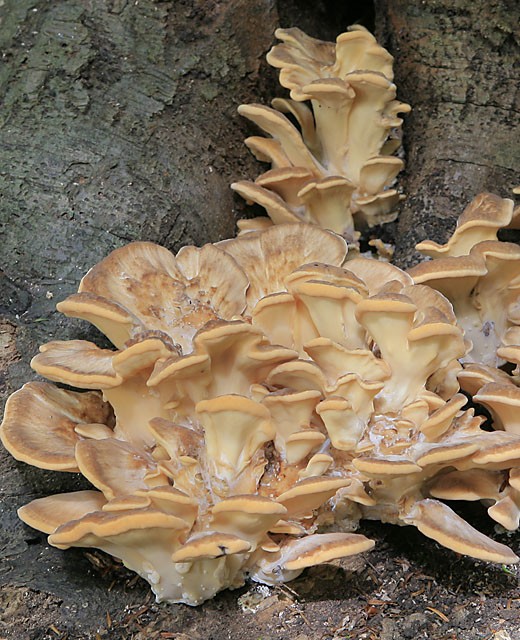Meripilus
Scientific name: Meripilus
Meripilus
Scientific name: Meripilus
 Photo By walt sturgeon (Mycowalt) , used under CC-BY-SA-3.0 /Cropped and compressed from original
Photo By walt sturgeon (Mycowalt) , used under CC-BY-SA-3.0 /Cropped and compressed from original Description
Meripilus is a group known for producing large, fan-shaped clusters that often resemble a rosette or the petals of a flower. They typically grow at the base of trees or on decaying wood. Some species have a distinctive ability to change color, darkening when bruised or handled. These organisms play a crucial role in forest ecosystems by aiding in the decomposition of dead wood, thereby recycling nutrients back into the soil.
Species of Meripilus
Scientific Classification
Phylum
Club fungi Class
Mushroom-forming fungi Order
Shelf fungi Family
Meripilaceae Genus
Meripilus 